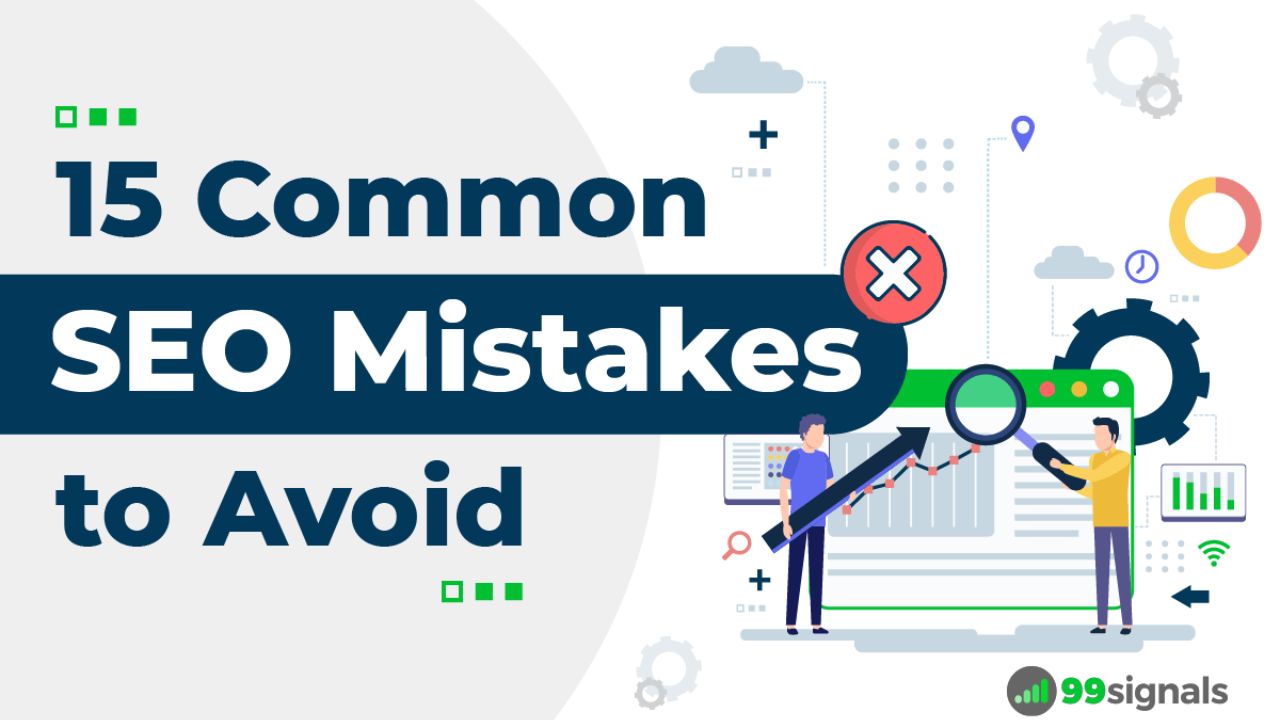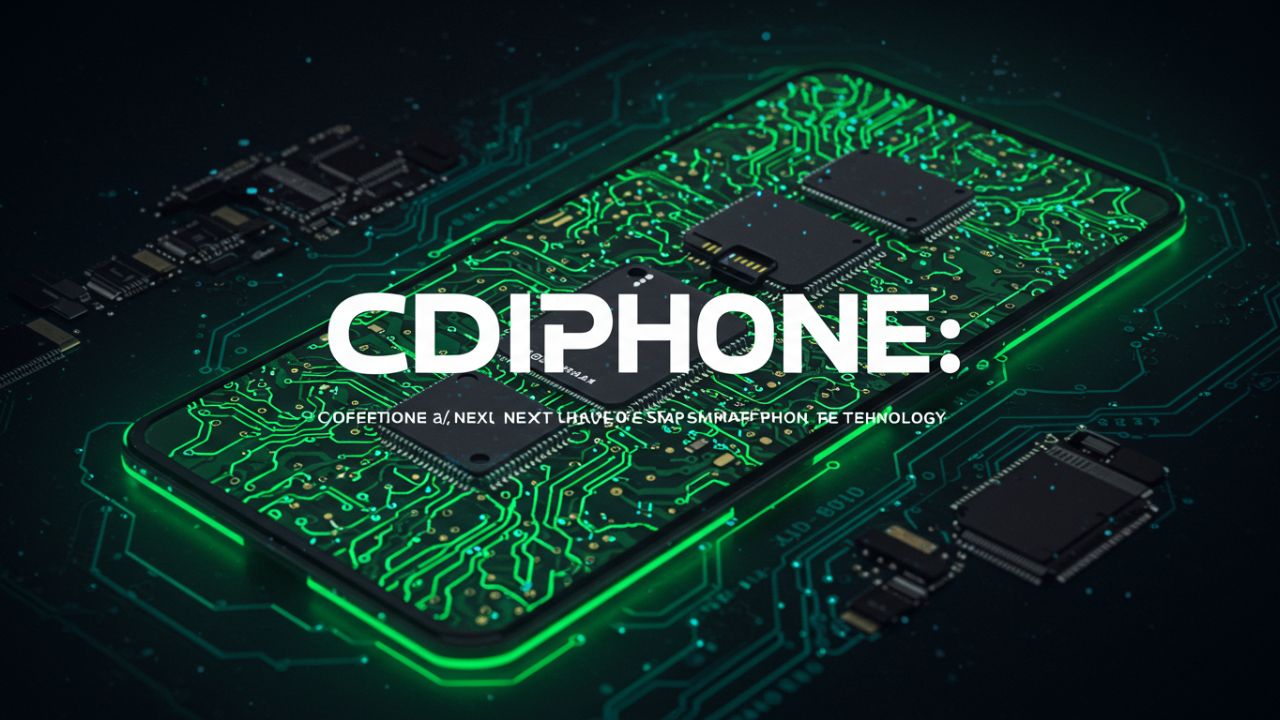Technology
7 Ways a Marketing Agency Drives Customer Loyalty

Every thriving company’s heart is customer loyalty. Though winning fresh customers feels good, growth depends on keeping them. Loyal consumers come back often, suggest brands, and spend more. Reducing the need for continuous fresh leads also helps them to stabilise. Still, it’s not simple to develop that level of devotion. It demands originality, planning, and ongoing effort. A marketing agency Manchester distinguishes itself here.
With knowledge in research, design and digital technologies, marketing agencies enhance client connections at every point of contact. They develop loyalty programs that keep people coming back, experiences that enchant, and campaigns that connect. Working with the appropriate agency transforms first-time purchasers into long-term fans. It’s about ensuring every client feels appreciated on their trip with your brand, not only about deals, but also about trust building.
Creating Personalised Campaigns
People crave to be noticed. Action is no longer motivated by general messages. Marketing firms investigate consumer buying history, interests, and behaviour. Using this information, they create unique, appropriate campaigns. Emails include names, offers reflect previous purchases, and advertisements match browsing activity. This degree of detail makes clients appreciate their value. It shows the brand is attentive and knows. People return more often and participate more when they sense a connection. Personalisation creates emotional links that go beyond simple transactions.
Developing a Distinctive Brand Identity
A robust brand identification is like a familiar face in a swarm. Customers know it at once. With images, tone, and messaging, marketing agencies assist companies in defining that identity. They guarantee ads, social media, and websites all employ the same voice. Consistency builds trust. Customers feel safe when they see the same values repeated everywhere. Agencies also emphasise what distinguishes a brand. This distinctive feature sets companies apart from their rivals. A great identity makes consumers happy to connect with the brand.
Relating Through Social Media
Social media is a dialogue rather than only a platform. Customers want interaction, not one-way sales messages. Marketing agencies employ interactive tools such as polls or Q&A; sessions to craft appealing content and reply promptly. These activities demonstrate to consumers that the brand is listening. They also bring people closer to a community. Agencies design content that starts discussions, not just clicks. These minor contacts help to foster loyalty over time. Customers remain linked since they feel they belong to something bigger.
Delivering Valuable Content
Not only do people search for items, but also for solutions. Through pertinent content, organisations are assisted by agencies in delivering that. Blogs explain, guides educate, and videos inspire. This material helps consumers learn new things or solve issues. Customers see a brand that freely distributes information as a dependable source. They return not only for goods but for counsel as well. This number develops profound confidence over time. Regular consumers realise the company values more than only profit.
Running Loyalty Programs
Rewards show customers how special they are. Loyalty programs created by organisations motivate recurring purchases. Appreciation is indicated through points, special discounts, or early access to goods. These systems generate buzz. With every transaction, clients anticipate rewards. Furthermore, making switching to rival companies less appealing is a strong loyalty program. Agencies arrange these systems meticulously such that they are enjoyable to use and beneficial.
Better Decisions Using Data
Data conveys tales. Agencies gather information about customer purchases, visit frequency, and content interaction. They act on this data. Offers are changed, campaigns are tweaked, and consumer experiences are enhanced. This method guarantees companies avoid wasting time guessing. Every choice is founded on facts. Customers see these changes. They sense the brand is always changing to better meet their demands. Data-driven approaches show care and accuracy that fosters greater trust.
Improving Customer Experience
Experiences that are seamless help to develop loyalty. Agencies concentrate on every phase of the consumer path. They verify the responsiveness of the service, the clarity of the emails, and the user-friendliness of the websites. Customers come back without second thought after a straightforward, uplifting experience. Marketing agencies also look for pain spots that turn people away. Correcting these problems provides long-lasting fulfilment. Brands that value customers’ time and simplify life are remembered.
Adapting to Changing Needs
Customer demands always change. Behaviour is influenced by new trends, technology, or cultural shifts. Marketing agencies keep an eye on these changes and swiftly modify tactics. They present contemporary tools, renew designs, and update campaigns. This flexibility reveals the brand’s contemporary status to consumers. Organisations that change remain current and honest. Customers stay with brands that develop with them rather than trailing off. Long-term dedication is obviously shown in one’s flexibility.
Conclusion
Customer loyalty goes beyond regular purchases. It concerns developing confidence, providing value, and presenting significant experiences. Key participants in this process are marketing agencies. They provide useful content, customise campaigns, and define distinct brand identities. Furthermore, they promote word of mouth, create loyalty programs, and enhance consumer experiences.
Businesses change quickly and meet shifting demands under professional mentorship. A reliable customer base next provides the basis for expansion. Brands may transform customers into lifelong advocates who remain, share, and believe with the appropriate agency.
Visit woolrec for more informative blogs.
Technology
DIY SEO Mistakes Melbourne Business Owners Keep Making

Melbourne hums with ambition. Cafés multiply across laneways, boutiques appear on quiet corners, and small agencies chase digital relevance. Many owners decide to handle their own SEO because budgets feel tight. The internet seems manageable, but then the problems start. The same avoidable mistakes appear again.
The list below highlights those missteps with clarity. Read them, understand them, and make sure not to repeat them, as SEO experts in Melbourne suggest.
Mistake 1: Ignoring Local Intent
Many business owners chase broad keywords. “Best coffee,” “top barber,” or “wedding florist” attract attention. Those keywords lack location signals.
Melbourne search behaviour demands suburb relevance. For instance, Carlton produces different queries from Frankston, and Fitzroy differs from Sunbury. Generic targeting weakens performance. Google ignores pages without geographic accuracy, so the result stays invisible.
Mistake 2: Poor Google Business Profiles
Some owners open a Google Business Profile, then forget to refine it. So, avoid the below mistake:
- Blank service areas linger.
- Old addresses remain.
- Missing photos leave empty frames.
- Incorrect hours confuse visitors.
- Unverified listings drop trust.
- Reviews gather dust.
- Responses never appear.
Algorithms punish negligence. Competing businesses occupy map packs instead. Local customers follow the better presented profile.
Mistake 3: Copy-Paste Descriptions
DIY enthusiasts grab text from rival websites or old brochures. Plagiarised content poisons rankings, as search engines detect repetition immediately. Such duplicate phrasing creates penalties. Eventually, pages sink into digital obscurity.
A unique voice strengthens authority, while unoriginal lines damage it. Many owners underestimate this risk but it deserves special attention.
Mistake 4: Overlooking Mobile Users
Melbourne residents favour phones during commutes, queues, and tram rides. But websites often load slowly on small screens, buttons shrink to ant size, fonts blur, images overflow, and so on. This is primarily because DIY websites ignore responsive design. Google notices every flaw and rankings decline. Users abandon pages swiftly. Bounce rate climbs without mercy.
Melbourne hums with ambition. Cafés multiply across laneways, boutiques appear on quiet corners, and small agencies chase digital relevance. Many owners decide to handle their own SEO because budgets feel tight. The internet seems manageable, but then the problems start. The same avoidable mistakes appear again.
The list below highlights those missteps with clarity. Read them, understand them, and make sure not to repeat them, as SEO experts in Melbourne suggest.
Mistake 1: Ignoring Local Intent
Many business owners chase broad keywords. “Best coffee,” “top barber,” or “wedding florist” attract attention. Those keywords lack location signals.
Melbourne search behaviour demands suburb relevance. For instance, Carlton produces different queries from Frankston, and Fitzroy differs from Sunbury. Generic targeting weakens performance. Google ignores pages without geographic accuracy, so the result stays invisible.
Mistake 2: Poor Google Business Profiles
Some owners open a Google Business Profile, then forget to refine it. So, avoid the below mistake:
- Blank service areas linger.
- Old addresses remain.
- Missing photos leave empty frames.
- Incorrect hours confuse visitors.
- Unverified listings drop trust.
- Reviews gather dust.
- Responses never appear.
Algorithms punish negligence. Competing businesses occupy map packs instead. Local customers follow the better presented profile.
Mistake 3: Copy-Paste Descriptions
DIY enthusiasts grab text from rival websites or old brochures. Plagiarised content poisons rankings, as search engines detect repetition immediately. Such duplicate phrasing creates penalties. Eventually, pages sink into digital obscurity.
A unique voice strengthens authority, while unoriginal lines damage it. Many owners underestimate this risk but it deserves special attention.
Mistake 4: Overlooking Mobile Users
Melbourne residents favour phones during commutes, queues, and tram rides. But websites often load slowly on small screens, buttons shrink to ant size, fonts blur, images overflow, and so on. This is primarily because DIY websites ignore responsive design. Google notices every flaw and rankings decline. Users abandon pages swiftly. Bounce rate climbs without mercy.
So, remember that mobile performance decides success.
Mistake 5: Stuffing Keywords Everywhere
Old SEO myths still circulate. Some owners sprinkle keywords recklessly. This turns sentences robotic and paragraphs read like spam. Pages repeat “Melbourne plumber” twenty times, pushing search engines to penalise keyword cramming. This makes visitors flee after two lines.
Relevance requires natural language. DIY attempts wreck the flow.
Mistake 6: Weak Title Tags
Title tags operate like digital labels. Many owners leave generic placeholders but “Home” or “Welcome” appear on multiple pages. Algorithms dislike bland tags. Users skip vague titles on result pages. Optimised tags require focus. DIY efforts forget that influence. Valuable clicks move elsewhere.
Mistake 7: No Meta Descriptions
Countless websites ignore meta descriptions. Google then fills the gap with random text snippets. Then, the result looks clumsy and users hesitate. But clear summaries attract clicks. Competing pages gain advantage instantly.
Mistake 8: Broken Internal Links
Website pages often link to outdated URLs. Deleted blogs stay referenced. Location pages vanish without redirection. Visitors hit 404 pages. Search engines interpret those signals as poor maintenance. Rankings suffer. Many DIY owners fail to audit links. Every broken path sabotages visibility.
Mistake 9: Neglecting Image Optimisation
Large images slow everything. Some common mistakes in this aspect include:
- Filenames often read like “IMG_0021.”
- Alt text goes missing.
- DIY creators ignore compression tools.
Then, crawlers skip those images entirely. Speed scores plummet and accessibility disappears. Melbourne customers lose patience with delayed load times.
Mistake 10: Skipping Analytics
SEO progress needs tracking. Many owners install nothing. No Google Analytics. No Search Console. No reporting tools. Performance remains mysterious. Pages could sink without warning. Trends remain invisible. Errors go unnoticed. Data would guide improvement. Instead, assumptions rule decisions.
Mistake 11: Forgetting Backlinks
Links from external sites build credibility. Melbourne blogs, directories, and partners offer opportunities. DIY efforts rarely pursue them because business owners assume content alone attracts links.
Search engines rank pages with authority weight. No links equals no influence. Competitors gain ascendancy through outreach.
Mistake 12: Thin Content Pages
Several websites show three-sentence pages, while service pages hold minimal information. Blog posts barely cover topics. But search engines value depth and reflect that expectation. If that doesn’t happen, rankings will start to.
13: Outdated Information
Businesses evolve, as hours change, products shift, and team members leave. However, DIY websites remain frozen in time. Searchers encounter stale facts. Trust dissolves quickly. In the end, Google demotes useless content.
The solution is to have up-to-date accuracy that boosts reliability. Many owners forget that responsibility.
Mistake 14: Avoiding Schema Markup
Schema markup gives structured clarity to search engines. Rich snippets appear through it. Yet, DIY efforts rarely touch it because code feels intimidating. Opportunities vanish as a result. Competitors highlight reviews, products, or FAQs with enhanced results. DIY pages look plain and forgotten.
Mistake 15: Slow Hosting Plans
Discount hosting attracts many small business owners, but cheap servers produce sluggish performance. For instance, high traffic creates jams and security holes appear. Also, Melbourne users expect speed, and search engines do as well.
DIY decisions often sacrifice quality for cost. This lets Search rankings suffer each time.
Final Word
Awareness marks the first turning point. Every misstep listed here can be fixed. Websites can evolve, content can shine, and local customers can discover the right business at the right moment. If you want to steer clear of these mistakes (and possibly more), recognise the importance of working with an SEO expert in Melbourne. Make My Website is one of the best names we suggest. Check them out, discuss your needs, and see how you can collaborate for better results.
Good luck!
Technology
Calamariere: Redefining the Future of Digital Innovation

In a rapidly changing online world, innovation has become the key to success. Today, creators and businesses are constantly seeking smarter platforms that can enhance their productivity and creativity. One such emerging name is Calamariere. This advanced digital platform is gaining global attention for blending intelligent technology with modern collaboration tools.
From artificial intelligence to real-time teamwork, Calamariere offers a unified space where ideas transform into reality. In this article, we’ll explore how Calamariere works, what makes it unique, and why it is shaping the future of online innovation.
What Is Calamariere?
Simply put, Calamariere is an all-in-one digital workspace that helps creators, entrepreneurs, and teams collaborate more effectively. Instead of switching between multiple tools, users can manage everything within a single platform. As a result, productivity improves while creativity remains at the forefront.
Unlike traditional project management software, Calamariere integrates AI-driven features, real-time data tracking, and seamless communication channels. Therefore, users can brainstorm, build, and publish projects without interruptions.
The Purpose Behind Calamariere
The mission behind Calamariere is simple yet powerful to simplify digital creation while fostering innovation. In today’s world, professionals often waste time navigating between apps and tools. Consequently, this fragmentation slows progress and reduces efficiency.
To solve this issue, the creators of Calamariere envisioned a flexible and intelligent ecosystem. Their goal was to design a platform that could adapt to different users designers, marketers, developers, and educators alike. Moreover, they wanted to make advanced technology accessible to everyone, not just tech experts.
Key Features of Calamariere
Calamariere stands out for its range of forward-thinking features. Each function is designed with usability, collaboration, and creativity in mind. Let’s explore some of the most notable ones below.
1. Unified Digital Workspace
With Calamariere, everything you need is available in one place. This not only reduces distractions but also saves time. Furthermore, the platform’s user-friendly interface ensures a smooth experience for beginners and professionals alike.
2. AI-Enhanced Productivity Tools
Artificial intelligence powers many of Calamariere’s core features. For instance, it can automate repetitive tasks, generate content suggestions, and even analyze performance trends. Consequently, users can focus more on creativity and strategy instead of manual work.
3. Real-Time Collaboration
Teams can collaborate in real time, which makes Calamariere perfect for remote work. Multiple people can edit, comment, and update projects simultaneously. In addition, built-in communication tools help reduce dependency on external apps like Slack or Zoom.
4. Secure Cloud Integration
Security remains a top priority for Calamariere. All projects and files are stored in encrypted cloud servers with automatic backups. Therefore, users can work confidently knowing their data is safe and always accessible.
5. Advanced Analytics and Insights
Data-driven decision-making is now easier than ever. Calamariere includes advanced analytics dashboards that display engagement metrics, performance reports, and workflow summaries. As a result, users can refine their strategies using real data.
Why Calamariere Is Gaining Popularity in 2025
There are countless digital tools on the market, but Calamariere is quickly standing out. One reason for its popularity is its balance between simplicity and intelligence. While many platforms are either too complex or too limited, Calamariere offers the best of both worlds.
Additionally, the platform encourages community collaboration. Users can share resources, exchange feedback, and even collaborate across projects. This growing network makes Calamariere not only a tool but also a vibrant ecosystem for creators.
Moreover, its continuous updates ensure the platform stays relevant. In 2025, when innovation drives competition, Calamariere continues to evolve with new AI integrations and improved user experiences.
Benefits of Using Calamariere
The benefits of Calamariere extend far beyond convenience. By centralizing creativity, communication, and analytics, it delivers measurable results. Let’s look at some key advantages.
1. Time Efficiency
Thanks to its automation features, Calamariere reduces repetitive manual work. As a result, projects move faster from planning to execution. This efficiency is especially valuable for teams handling multiple deadlines.
2. Enhanced Collaboration
Unlike traditional tools, Calamariere enables real-time teamwork regardless of distance. Therefore, it bridges the gap between remote employees, clients, and creative partners.
3. Improved Creativity
The AI-powered recommendations and customizable templates in Calamariere inspire users to experiment. Furthermore, flexible design options give creators the freedom to innovate without limits.
4. Cost Savings
Because Calamariere combines multiple tools into one, users can cancel redundant subscriptions. This makes it not only efficient but also cost-effective particularly for small businesses and startups.
5. Reliable Security
With strong encryption and secure cloud servers, Calamariere ensures that every file remains protected. Moreover, automatic backups prevent data loss in case of system errors.
How Calamariere Stands Out from Its Competitors
While several digital platforms claim to enhance productivity, Calamariere distinguishes itself through its adaptability and personalization. Unlike one-size-fits-all software, it adjusts to the unique needs of every user.
In addition, its AI engine learns from user behavior. Over time, Calamariere becomes more intuitive, suggesting faster workflows and smarter automation. Therefore, it doesn’t just assist it evolves alongside its users.
Furthermore, the platform integrates smoothly with other digital tools such as Google Workspace, Trello, and Notion. This compatibility allows users to build a connected, customized workflow with minimal disruption.
The Future of Calamariere
The future looks bright for Calamariere, as it continues to innovate with cutting-edge technology. Developers are already working on integrating machine learning, VR environments, and blockchain verification into future updates.
Consequently, Calamariere is expected to expand beyond creative industries and into areas like education, remote training, and digital marketing. As the digital economy grows, platforms like Calamariere will play a crucial role in shaping how people work and connect online.
Why You Should Try Calamariere Today
If you’re seeking a digital solution that simplifies your workflow while inspiring creativity, Calamariere is worth exploring. It offers an intuitive experience, whether you’re a freelancer, business owner, or creative team.
Moreover, its combination of AI intelligence, collaboration tools, and data security makes it one of the most promising platforms of 2025. With Calamariere, you can work smarter, collaborate better, and innovate faster all within a single ecosystem.
Final Thoughts
In conclusion, Calamariere is more than just another digital platform it’s a revolution in online productivity and creativity. It empowers users to think differently, work efficiently, and grow continuously.
As technology evolves, tools like Calamariere remind us that innovation is not about complexity it’s about making life simpler, smarter, and more connected. Therefore, embracing Calamariere today could be the key to staying ahead in tomorrow’s digital world.
Technology
How Social Media Experts Drive Growth for Small Businesses

Businesses of all sizes may effectively contact prospects and consumers through social media communication. Social media is where people find, research, follow, and purchase from organizations, so if you’re not active on sites like Facebook, Instagram, and LinkedIn, you’re losing out! Through focused campaigns, innovative content, and successful methods, the team of social media experts in Pakistan assists businesses in expanding their online presence. Effective social media marketing can help your company achieve amazing success by generating loyal brand supporters and even increasing leads and revenues.
- This comprehensive guide to social networking management will teach you:
- An explanation of social media marketing, including statistics, advantages, and advice.
- How to create a plan to implement a strategy for marketing on social media.
- How to use the top seven social media platforms for advertising.
Select The Appropriate Networks
Since Facebook went public in 2012, social media has taken off, with several thousand networks devoted to a wide range of topics, from social activism to reuniting former classmates.
How does an organization choose the best options out of all of these? The majority of experts advise joining the most well-liked ones; which ones to choose depends on your audience and objectives. Here are some details to get you going:
- Facebook, the largest platform with 2.1 billion monthly active users, according to Statista, is ideal for companies seeking to establish relationships and generate leads.
- LinkedIn is a business networking site that both B2B and B2C companies may utilize to engage audiences, establish authority, and foster trust.
- X: Its immediacy platform is ideal for companies that need to keep up with time-sensitive information, such as announcements, breaking news, and subjects that are popular, and whose primary audience is under 50.
- For businesses with a visual attractiveness (think restaurants, fashion, art, vacations, and weddings), Pinterest is an excellent venue for promoting their content.
Social Media Marketing Advantages
Social media represents one of the best free ways to sell your business these days because of its extensive use and adaptability. The following are some particular advantages of social networking marketing:
- Humanize your company: You may use social media to make your company an active player in your market. Your audience may get to know, relate to, and trust your friendly persona through your posts, communication with users, and profile.
- Drive traffic: Social networking is a great way to get more people to visit your website, where you can turn them into clients, thanks to the links in your profile, your blog articles, and advertisements. Additionally, social signals play a role in SEO indirectly.
Businesses Can Learn More About Their Customers
Finding those who are important to you and getting to know their needs, wants, and experiences is the first, along with the most evident, advantage. Online users are frequently more open to discussing their experiences and more responsive to brands and items.
Examine the social media accounts of your competitors to find out more about your clients and potential clients. Visit groups where people talk about your niche as well. For instance, look for Facebook gardening communities and see what subjects individuals are talking about to generate content to put on your gardening website.
Create Leads And Customers:
With features like Instagram/Facebook shops, personalized messages, buttons with calls to action on profiles, and appointment scheduling tools, you can also create prospective clients and convert them directly on these platforms.
Boost brand awareness:
Social media platforms’ visual format enables you to establish your visual identity in front of large audiences and raise brand recognition. Additionally, increased brand recognition translates into improved outcomes for all of your other efforts.
Client Confidence
Through the development of genuine, personal connections that go beyond the bounds of conventional marketing, social media revolutionizes the way small businesses gain the trust of their clients. Social media platforms give business owners the opportunity to share their personalities, values, and behind-the-scenes activities with clients, which helps them feel more connected to the brand than impersonal advertising methods. Small businesses exhibit transparency and accessibility that larger firms frequently find difficult to attain when they share their story, personally answer comments, and have genuine interactions.
Overcoming The Cacophony Of Advertisements
Social media is just one of several platforms where people are constantly exposed to advertisements. That is an issue if advertisements are the only marketing strategy used by your small firm.
According to experts, “They are seeing consumers show signs of advertisement fatigue in the advertisement world.” “They are continuously inundated with sponsored advertisements while they are browsing the internet, watching their favorite show, paying attention to podcasts, or commuting down the road.”
Customers such as himself “can smell an advertisement that is paid for from a mile away and we often ignore them like the plague,” experts noted. The beneficial news is that your company can get clients more authentically with organic social networking marketing.
How To Open Your Social Media Accounts In Five Easy Steps
You may stimulate your brand’s online social networking presence in a matter of minutes. This is a five-step guide that explains how small businesses can begin social media marketing.
- On your PC or mobile device, go to the social media site of your choice.
- Register and set up a bank account for your business.
- Take ownership of your company’s username.
- Include your bio, website URL, and profile image or logo.
- Post your first article.
See this advice from experts for detailed guidance on how to maximize your social media platforms.
Final Words
The most crucial thing to keep in mind is that social media sites are not a place to pitch your company, on account of the platforms actively use or how you please use them. You can offer helpful information, show off your principles, express your individuality, and uplift others around you in this community.
Visit woolrec for more informative blogs.
Technology
Commercial CCTV for Business Premises: Top Insights

Businesses of all sizes prioritise security nowadays. Investment in protection gives people peace of mind as well as protection of personnel, assets, and sensitive data. CCTV is one of the most effective and widely utilised tools for this. Commercial CCTV is recognised for preventing crime, but its application in companies has expanded. High-tech surveillance systems assist organisations make the workplace safer, monitor activities, reduce liability, and obey the regulations.
The Evolution of CCTV in the Commercial Sector
Commercial CCTV has improved well beyond its black-and-white footage. CCTV systems are more modern and provide real-time information thanks to digital technology, HD recording, cloud storage, and smart analytics. Remote access, face recognition, motion detection, and AI-powered threat analysis are now available to businesses. Companies now view CCTV as a proactive management tool rather than a reactive security measure. A well-planned commercial CCTV installation enhances security and provides peace of mind for business owners.
Why CCTV is Crucial for Business Premises
There are several reasons businesses should install CCTV. First and foremost, it deters criminality. Intruders, vandals, and thieves are less likely to target properties with cameras. Retail, hotel, and logistics organisations that handle high-value goods or cash benefit from this protection method. CCTV helps with corporate issues like policy violations and staff misbehaviour by providing neutral evidence. CCTV footage is reliable for investigations, insurance claims, and legal proceedings if something awful happens.
Enhancing Workplace Safety and Employee Confidence
Security is another benefit of CCTV in organisations. Entrances, parking lots, loading bays, and production floors with strategically placed cameras help workers feel safe. Businesses operating late or in high-security areas need this. CCTV cameras can also ensure health and safety. Managers can check warehouse or factory video footage for safety violations and areas for improvement. Finally, workers are safer, more productive, and more confident.
The Role of CCTV in Operational Oversight
Businesses now realise that CCTV cameras assist, manage operations and keep people safe. Managers may use security camera footage to monitor job flow, customer service, and productivity. Looking at shop footage may show you how consumers behave, when the store is busiest, and where traffic bottlenecks are probable. CCTV can also ensure proper handling and timely logistics loading and unloading. Monitoring and other management measures may boost efficiency and reduce waste for businesses.
Choosing the Right CCTV System for Business Premises
Businesses must carefully consider many factors when purchasing a CCTV system. The right strategy relies on building size, layout, risk, and requirements. Large buildings or multi-location corporations often prefer networked systems with remote monitoring. If they have night vision and HD recording, standalone systems may work for smaller businesses. Many organisations use cloud-based solutions to safely access video from anywhere, which is flexible and handy. Skilled installation and maintenance are also essential for reliability and performance.
Integrating CCTV with Broader Security Systems
CCTV works best as part of a business’s security system. CCTV may be used with alarm, access control, and perimeter security to provide total security. To record events clearly, cameras may be programmed to automatically concentrate on the alarm site. Access control systems may be coupled to CCTV to track who arrives and departs, documenting all property activity. Tiering security may give businesses the most protection and the fewest flaws.
The Future of Commercial CCTV
AI and smart technology will likely change business CCTV. Smart analytics allow systems to distinguish between normal and abnormal behaviour, reducing false warnings. More companies of all sizes can employ heat mapping, face recognition, and object tracking. Cloud storage and 5G connections will make surveillance systems more flexible and accessible, enabling seamless monitoring of several locations. CCTV will make things safer and provide businesses more information about how they work and how consumers respond as technology improves.
Conclusion
CCTV is essential for business owners. Its uses range from employee security and criminal prevention to operations optimization and compliance. The actual value of CCTV is choosing the right system, utilising it appropriately, and integrating it into a security and management plan. By doing this, businesses may convert CCTV from a simple monitoring tool into a tool that boosts safety, trust, and productivity. Commercial CCTV is one of the finest investments a company can make since threats and problems change.
Visit woolrec for more informative blogs.
Technology
Shopify Branding: 7 Smart Ways To Improve Engagement

Decisions are strongly influenced by emotions. Experts assert that almost every decision you make is influenced by subconscious emotion, despite the fact that you have undoubtedly struggled to prioritize reason above emotion. Appealing to the emotions of an audience is therefore over sixty percent of the battle for marketing teams. Building a strong emotional bond between a company and its audience is the main goal of brand engagement, which paves the way for a successful partnership. Shopify partners UK offers educational opportunities, design, and marketing solutions to help companies create, modify, and expand their online stores.
Brand Engagement: What Is It?
The emotional bond between a customer and a brand is known as brand engagement. It entails fostering meaningful connections via engagement with the community, storytelling, and customized experiences. Strong brand engagement promotes advocacy, increases consumer loyalty, and eventually propels long-term company success.
- As a mental procedure. The psychological procedure of developing a deep emotional connection with a brand is known as brand engagement in marketing theory.
- As a method of marketing. The process of motivating target audiences to develop emotional bonds with brands, frequently as a component of a broader brand management strategy, is another name for brand engagement.
- As a result of marketing. Another performance metric that characterizes the caliber of a brand’s interaction with its audiences is brand engagement: If customers identify with a firm’s brand on an emotional level, that company exhibits substantial brand engagement.
Astute Product Suggestions
Customers anticipate that retailers will be aware of their preferences. This feeling of familiarity is facilitated by displaying tailored product recommendations based on browsing and buying behavior. A more user-friendly shopping experience, larger basket sizes, and higher conversion rates result from this.
Make pertinent recommendations during checkout, on product pages, and on homepages. The goal here is to direct buyers towards logically related or complementary products rather than to overwhelm them. Consider it a gentle prod rather than a pushy sale.
Simplified Checkout Procedure
One of the key factors preventing conversions in e-commerce is still cart abandonment. The cause is frequently a convoluted or sluggish checkout process. Simplify your checkout process by eliminating extraneous fields, enabling guest checkout, and cutting down on processes to lower friction. Consumers desire consistent, safe, and quick flows. Clean layouts, one-click payment alternatives, and visual trust signals all contribute to speed and confidence.
Streamlining your checkout process not only increases the likelihood that a customer will make a purchase, but it also creates a positive, recurring shopping experience.
Make Your Email List and Segment It
Offer Alluring Incentives
Use pop-ups, banners, or freebies to offer discounts or exclusive content (like “Get 15% off your first order”) in return for sign-ups. During sign-up, collect interests to aid in segmentation.
Send Valuable and Rich Emails
To greet new subscribers, send them a personalized email. Incorporate a variety of content types, including guidance, product debuts, flash sales, and customer reviews. Emails should include connections to stores and social media, be succinct, and have a clear call to action.
Customization Section
- Demographics: Modify by age, gender, and location.
- Purchase History: Send emails with product recommendations, incentives, or refill requests.
- Engagement: Resurrect dormant users with special incentives.
- Interests: Tailor material according to sign-up or survey information.
- Source: Differentiate between online and in-person sign-up messages.
Advanced Navigation and Search
No matter how many products you have, clients will still leave if they can’t find what they’re seeking promptly.
Intelligent search functionality is required. This includes correcting errors, providing predictive results, and enabling price, colour, and availability-based filters. This gives visitors the confidence to browse your collection confidently and makes product discovery feel natural.
A community should be built around your brand.
Customers of today choose to purchase from companies that share their beliefs and way of life. They are more at ease getting product inspiration from another person than from brand advertising because they think that their peers’ insights have greater power.
Better marketing and e-commerce experiences are especially needed in light of the rise of ad-blocking. By facilitating these encounters through carefully designed consumer communities, brands can embrace this trend rather than fight it.
Give clients benefits beyond the transaction.
The notion that one’s pursuit of a consumer stops at the point of sale is, as we have seen, essentially outdated. Brands are missing the big picture and losing out on a significant amount of income potential when they are solely focused on a single selling proposition.
Brands may re-engage customers and encourage more purchases by providing them with information, value-added services, and complementary products after they have made a purchase.
Final words
For retailers, increasing the average client longevity is essential. Increased profitability, more devoted clients, and a higher average order value are all possible outcomes. Getting somewhere entails more than just entering numbers into the customer’s lifetime value calculation.
Visit woolrec for more informative blogs.
Technology
Top 8 Copywriting Examples Every Content Marketer Should Study

With the quick pace of the contemporary digital marketing era, nothing can replace the strength of words. Great copywriting is the strength behind buyer engagement, brand loyalty, and ultimately turning readers into customers. For content marketers, learning from the great examples is not just for the sake of inspiration; it’s a must in mastering their art. These case studies offer priceless psychology, persuasion, and stylistic accuracy lessons, showing how precise word choice can have remarkable impacts. From penning e-mail marketing efforts, social media messages, or web content, learning from successful efforts creates a road map to success. Copying the best offers a blueprint to be shaped and applied across various industries, a mentality reflected in the professionalism of a specialist copywriter Stockport.
Apple’s “Get a Mac” Campaign
This vintage campaign utilised comparison marketing beautifully in an easy, accessible manner. By personifying a Mac as a cool, relaxed young dude and a PC as a slightly stiff, older corporate type, Apple took difficult technical advantages and made them accessible, emotive benefits. Conversation was snappy, humorous, and sing-in-your-head, with zero techspeak to make excellence accessible. It didn’t merely enumerate features; it demonstrated a lifestyle and an attitude people aspired to. This campaign is a masterclass in how to make your product not only a tool, but a personality in the narrative of the customer, by creating a compelling brand ethos through simplicity and humour.
Dove’s “Real Beauty” Campaign
Dove broke the dialogue within the beauty space by committing to reality, rather than airbrushed perfection. Its own ad copy addressed empowerment and self-respect, depicting actual women at different ages, sizes, and backgrounds. The tone was positive, inviting, and emotional, exacting words usurping unfounded industry hype. This effort showed the immense potential of linking a brand to a greater social cause. It fostered amazing trust and loyalty by getting the customer to feel understood and appreciated, demonstrating that copywriting that brings out genuine human feelings can create so much deeper affinity than the most product-focused advert.
Tone of Voice of Innocent Drinks
Innocent Drinks constructed its entire brand on cheeky, witty and surprisingly candid copywriting. Each word, from the labelling of its smoothie bottles to its website and social media, appears to be that of a friendly, slightly eccentric mate. That warm, human voice makes a mundane product such as fruit juice very engaging and memorable. It is an excellent example of the power of a strong brand voice as a unique feature in a busy marketplace. Innocent demonstrates the importance of consistency and how to build a devoted customer base for a firm with an informal, jolly voice.
The “They Laughed When I Sat Down at the Piano” Advertisement
John Caples’ classic print ad is a mythic legend of narrative and curiosity-based copywriting. The headline instantly makes the reader a part of the story hook, with the reader insisting on knowing what happened afterwards. The body copy subsequently builds an empathetic tale of individual triumph, using emotional triggers of embarrassment and final success. It effectively uses a before-and-after structure, graphically outlining the problem and then demonstrating the answer (piano lessons) as the key to transformation. It demonstrates the power of a narrative path in building a value proposition that is compelling and memorable.
Gov.uk’s Plain English Initiative
The UK government website is a surprising but masterful example of good copywriting. Its mission is to translate intricate tax legislation to human rights into a language everyone can read. It accomplishes this through brutal editing, employing plain language, easy sentences, and a rational structure. This illustrates the fact that the long-term objective of copy is clarity for any price. It removes obscurity and renders the user able to complete their job quickly. Gov.uk learning shows the greatest importance of clear language, information ordering, and placing the user’s need to understand at the centre of all content.
Conclusion
Looking over these varied examples is a masterclass in the craft and science of copywriting. From the emotional connection of Dove and the inspirational kick of Nike to the directness of Gov.uk and the whimsy frisson of Innocent Drinks, all of them have age-old wisdom in resonating with individuals. What it all boils down to is a profound empathy of knowing what the intended customer desires, fears, and requires, and with the capacity to communicate that insight in plain, compelling, and strategic language. For any content marketing professional, ongoing reading of this kind is not just useful, but it is a necessity for mastery of the skill set through which one becomes able to create messages that truly do cut through the clutter and take action.
Visit woolrec for more informative blogs.
Technology
Cdiphone: Redefining the Next Wave of Smartphone Technology

Introduction
The smartphone industry never stops evolving, and every few years, a new term or concept reshapes the way we understand mobile technology. One such rising term is cdiphone. Although it may sound new to many, cdiphone is increasingly being linked to the next wave of innovation in mobile devices, merging smart features, artificial intelligence, and seamless connectivity into a single ecosystem.
This article dives deep into what cdiphone means, how it differs from regular smartphones, its applications, and why it’s becoming a subject of interest in the tech community.
Understanding Cdiphone
The term cdiphone is best described as a forward-looking idea of what smartphones could become in the near future. Rather than referring to one specific device or brand, cdiphone is about an evolved mobile platform that integrates:
-
Faster communication networks (5G and beyond).
-
AI-driven personalization for apps and services.
-
Cross-platform integration with smart homes, cars, and wearables.
-
Sustainability through energy-efficient designs and recyclable components.
In essence, cdiphone can be seen as the next natural step in smartphone evolution where your phone acts not just as a communication tool but as a central hub for your digital life.
Why is Cdiphone Becoming Important?
The reason cdiphone has gained attention is tied to growing consumer expectations. People no longer view their phones as just devices for calls and social media. Instead, they expect them to handle:
-
Remote work tasks
-
Online education
-
Home automation
-
Health tracking
-
Entertainment at near-console quality
As new demands emerge, so does the need for a term like cdiphone to capture the idea of “beyond smartphones.”
Distinctive Features of Cdiphone
When discussing cdiphone, several unique characteristics set it apart from traditional phones:
1. Intelligent Ecosystem
Cdiphone focuses on a connected lifestyle, where your phone seamlessly syncs with laptops, smart TVs, watches, and even vehicles.
2. Smarter AI Integration
Unlike basic voice assistants, cdiphone relies on contextual AI—anticipating user needs, automating tasks, and learning patterns for maximum convenience.
3. Enhanced Security
With digital threats rising, cdiphone highlights advanced protection, from biometric security to blockchain-backed data storage.
4. Cloud-Centric Design
Instead of storing everything locally, cdiphone encourages cloud-first usage, ensuring access to files and apps across multiple devices anytime.
5. Green Innovation
Energy-saving processors, biodegradable packaging, and sustainable production practices are all part of the cdiphone vision.
Advantages of Cdiphone
The cdiphone concept comes with several advantages that resonate with modern users:
-
Unmatched Productivity: AI and fast connectivity streamline daily workflows.
-
Holistic Integration: A single device that connects with various aspects of life.
-
Future-Ready: Designed to adapt to upcoming tech standards.
-
User-Centric: Learns from user behavior to provide personalized experiences.
-
Eco-Friendly: Aligns with growing demands for sustainable tech.
Challenges in Adopting Cdiphone
Like any innovation, cdiphone faces obstacles before mass adoption:
-
Affordability: Cutting-edge features often mean higher costs.
-
Learning Curve: Some users may find advanced features overwhelming.
-
Privacy Risks: With increased AI and cloud use, data protection becomes a top concern.
-
Infrastructure Dependence: Regions without strong 5G or IoT ecosystems may struggle to use cdiphone effectively.
How Cdiphone Differs from Traditional Smartphones
Here’s a quick comparison to illustrate the difference:
| Aspect | Regular Smartphone | Cdiphone Approach |
|---|---|---|
| Connectivity | 4G/Basic Wi-Fi | 5G+, Wi-Fi 6, IoT ready |
| Personalization | Limited customization | AI-driven, adaptive learning |
| Integration | App-based connections | Full cross-device ecosystem |
| Sustainability | Mixed eco efforts | Built on green innovation |
| Security | PIN, fingerprint, face ID | Biometric + blockchain tech |
This table highlights why cdiphone is seen as an advanced alternative rather than just an upgrade.
Applications of Cdiphone in Real Life
The cdiphone concept can impact a wide variety of industries:
-
Education: Enables smart classrooms and personalized learning experiences.
-
Healthcare: Syncs with wearables to track patient vitals in real time.
-
Business: Makes remote work smoother with faster connectivity and cross-device access.
-
Entertainment: Provides immersive AR/VR gaming experiences.
-
Smart Homes: Controls lighting, security, and appliances effortlessly.
Future Outlook of Cdiphone
Looking forward, experts believe cdiphone will play a pivotal role in shaping digital lifestyles. With the rise of 6G networks, AI companions, and decentralized data security, it’s vision is expected to become mainstream within the next decade.
Predictions include:
-
Affordable AI-integrated devices.
-
Broader global adoption of eco-friendly hardware.
-
Seamless blending of mobile, home, and workplace technologies.
-
Stronger privacy regulations to protect user data.
Final Thoughts
The cdiphone is more than a buzzword it reflects how smartphones are transforming into intelligent, sustainable, and highly connected digital hubs. While challenges exist, the long-term potential of it is enormous, offering a future where devices don’t just support our lifestyle but actively enhance it.
For anyone interested in technology, keeping track of it is worthwhile. As innovation continues, it may soon be the standard term defining the next generation of mobile devices.
Technology
Simpcit6: Unlocking the Next Phase of Digital Simplicity

Technology is advancing faster than ever, but with progress often comes complexity. People and businesses face the challenge of managing countless platforms, tools, and systems. This is where simpcit6 comes into play. Designed as a modern digital solution, simpcit6 focuses on cutting through unnecessary complications and delivering straightforward, user-friendly systems that still maintain advanced capabilities.
In this guide, we’ll break down the meaning of simpcit6, its features, practical uses, and why it is becoming one of the most talked-about innovations in the digital transformation era.
Understanding Simpcit6
At its foundation, simpcit6 is about streamlining digital processes. Rather than overwhelming users with complicated interfaces, it emphasizes clarity, efficiency, and ease of access. Businesses, educators, and even individuals can apply simpcit6 principles to achieve better results with less effort.
Think of simpcit6 as a framework that connects multiple tools while minimizing the time and training needed to use them. This dual focus on simplicity and connectivity makes it a practical solution for a wide variety of industries.
Why Simpcit6 Matters Today
The need for simpcit6 is growing rapidly. In a world full of mobile apps, cloud services, and AI-driven platforms, it’s easy to get lost in complexity. Here’s why simpcit6 has become essential:
-
Bridging gaps between people and technology.
-
Reducing costs by eliminating redundant tools.
-
Saving time by making systems more intuitive.
-
Encouraging adoption because users prefer simpler platforms.
In short, simpcit6 helps people focus on what matters rather than wasting hours trying to figure out confusing systems.
Real-World Applications of Simpcit6
1. Corporate Solutions
Companies are using simpcit6 to combine communication, workflow, and analytics into one system. This integration reduces errors and improves collaboration.
2. Education
Online learning platforms powered by simpcit6 offer simplified dashboards for both students and teachers. It’s easier to access lectures, track progress, and manage assignments.
3. Healthcare
Hospitals and clinics need fast, error-free record-keeping. Simpcit6 helps medical staff update and retrieve patient data without navigating complex databases.
4. Personal Productivity
From managing to-do lists to scheduling tasks, individuals can use it tools to stay organized with minimal effort.
Core Features of Simpcit6
To understand why it’s gaining popularity, let’s look at the features of simpcit6:
-
Minimalist Interfaces that are easy to learn.
-
Integration Capabilities with multiple apps.
-
Automation that handles repetitive tasks.
-
Strong Security to safeguard sensitive data.
-
Scalability so businesses of all sizes can use it.
These features combine simplicity with power, making it attractive across sectors.
Benefits of Simpcit6
Adopting it comes with several advantages:
-
Fewer Training Requirements – systems are simple enough for quick onboarding.
-
Greater Productivity – users spend less time navigating tools.
-
Better Collaboration – departments share information easily.
-
Long-Term Flexibility – simpcit6 grows with organizational needs.
These benefits demonstrate why many industries are actively exploring simpcit6.
Challenges and Limitations
Despite its promise, it is not without hurdles:
-
Transition Costs – migrating from old systems can be expensive.
-
Integration Barriers – legacy tools may not fit perfectly with simpcit6.
-
Cybersecurity Risks – new frameworks must stay ahead of threats.
The good news is that most of these issues are temporary. As simpcit6 evolves, updates are addressing these concerns.
The Future of Simpcit6
Looking ahead, it will likely expand its role in digital ecosystems. With the rise of artificial intelligence, 5G connectivity, and automation, simpcit6 is expected to offer:
-
Smarter automation with AI integration.
-
Stronger security to handle advanced cyber risks.
-
Better cross-platform compatibility.
-
Expanded use cases in industries like logistics, retail, and government.
The future of it is not just about simplicity it’s about shaping a connected, efficient, and inclusive digital world.
How to Implement Simpcit6 in Business
Organizations interested in it should approach it strategically:
-
Identify Pain Points – find areas where complexity slows performance.
-
Adopt in Phases – test simpcit6 solutions before full-scale rollout.
-
Provide Support – train teams for smoother adoption.
-
Track Outcomes – monitor time, cost, and efficiency improvements.
By following these steps, businesses can maximize the value of simpcit6.
Conclusion
In an age where digital overload is common, it provides a refreshing alternative. It prioritizes simplicity without compromising functionality, making it a valuable framework for businesses, educators, healthcare providers, and individuals alike.
With its ability to streamline processes, cut costs, and boost efficiency, it is poised to be a game-changer in the years to come. For those who want to stay ahead in the digital era, adopting simpcit6 isn’t just an option it’s a necessity.
-

 Law14 hours ago
Law14 hours agoMotorcycle Accident Lawyer Lexington SC — Protecting Riders’ Rights With Solomon Law SC
-

 Fashion14 hours ago
Fashion14 hours agoCustom Jersey Printing: Designing Your Team’s Identity with SeamJersey
-

 Blog1 month ago
Blog1 month agoi̇ns: Exploring Its Meaning, Values, and Modern Impact
-

 Blog2 months ago
Blog2 months agoYarlist: Everything You Need to Know About This Productivity Tool
-

 Blog2 weeks ago
Blog2 weeks agoAvery WR302S Firmware – The Complete 2025 User Guide
-

 Blog2 months ago
Blog2 months agoPernithia Galnith: Unlocking the Secrets of an Emerging Concept
-

 Blog1 month ago
Blog1 month agoOtentech Networks: Revolutionizing Digital Connectivity in 2025
-

 Blog3 weeks ago
Blog3 weeks agoDartskey Keyboard: The Future of Smart, Fast, Comfortable Typing

